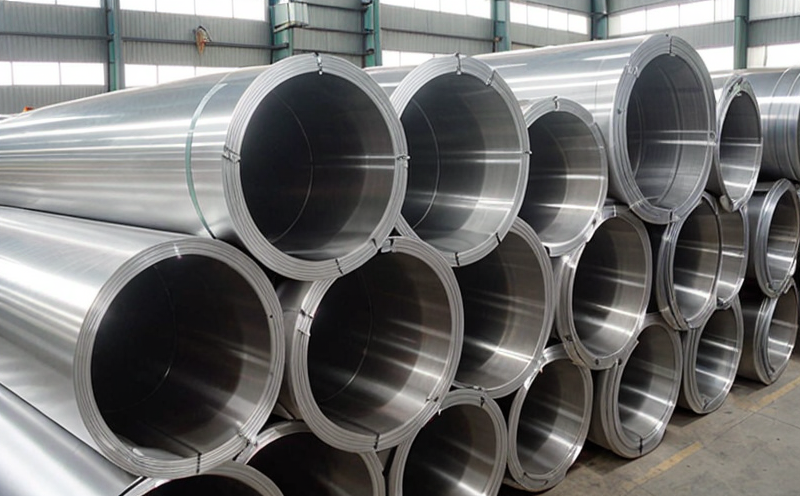IEC 60068-2-55 Damp Heat Long-Term Testing
The IEC 60068-2-55 standard specifies damp heat long-term tests to determine the effects of high humidity and elevated temperatures on materials, components, and assemblies. This testing is particularly relevant for marine and ship equipment where exposure to moisture and temperature extremes can significantly affect performance and longevity.
The test method involves exposing specimens to a controlled environment that simulates real-world conditions encountered in maritime environments. Specimens are placed inside a chamber maintained at 40°C, with relative humidity set between 85% and 93%. The test duration varies based on the specific requirements of the product or material being tested, but it can range from several weeks to months.
For marine equipment made from aluminium materials, such as hulls, pipes, and fittings, this testing is crucial. Aluminium is susceptible to corrosion when exposed to moisture and high temperatures, making IEC 60068-2-55 a vital standard for ensuring the durability of these components.
The process begins with thorough specimen preparation, which involves cleaning and conditioning the material as per specified guidelines in the IEC standard. Once prepared, specimens are placed into the test chamber where they remain under the specified conditions for the duration of the test.
During the test, continuous monitoring is performed to ensure accurate temperature and humidity levels. After the test period concludes, specimens are removed from the chamber, dried, and inspected for signs of corrosion or degradation. The results provide valuable insights into the material's resistance to damp heat conditions.
The data collected during these tests can be used by quality managers and R&D engineers to improve product design and ensure compliance with international standards. Compliance officers also benefit from this testing as it helps in meeting regulatory requirements for maritime equipment.
IEC 60068-2-55 is widely recognized in the marine industry, ensuring that products are reliable under challenging environmental conditions. This standard plays a crucial role in enhancing product performance and extending service life, which is essential for maintaining safety and efficiency in shipping operations.
Customer Impact and Satisfaction
- Enhanced reliability: By ensuring that materials withstand damp heat conditions, manufacturers can improve the overall reliability of their products.
- Increased durability: Products tested according to IEC 60068-2-55 are more likely to have a longer service life, reducing maintenance costs and downtime.
- Better compliance: Compliance with international standards ensures that products meet regulatory requirements, leading to better customer satisfaction and reduced risks of non-compliance penalties.
Customer satisfaction is directly linked to the performance and durability of marine equipment. By adhering to this testing protocol, manufacturers can ensure that their products are robust and reliable under challenging maritime conditions.
International Acceptance and Recognition
- The IEC 60068-2-55 standard is recognized globally for its rigorous approach to environmental testing.
- Many international organizations, including the International Maritime Organization (IMO), recommend or require compliance with this standard for maritime equipment.
- Compliance with these standards enhances a company's reputation and market presence in the global marine industry.
The widespread acceptance of IEC 60068-2-55 ensures that manufacturers can meet the stringent requirements set by various international bodies. This recognition is crucial for companies aiming to expand their market reach and maintain high standards of quality and safety.
Use Cases and Application Examples
| Application Example | Description |
|---|---|
| Marine Hull Plating | Hull plating is subjected to prolonged exposure to sea water, which can lead to corrosion. IEC 60068-2-55 helps ensure that the aluminium plates used in hull construction are resistant to such conditions. |
| Aluminium Pipes and Fittings | These components must withstand high temperatures and humidity during installation and operation on ships. Testing according to IEC 60068-2-55 ensures their reliability under these challenging conditions. |
| Marine Valves and Controls | Valves and controls are critical for the safe and efficient operation of marine equipment. Ensuring they can withstand damp heat helps maintain operational integrity and safety. |
| Aluminium Anchors | Anchors must be durable to ensure secure mooring in various weather conditions. IEC 60068-2-55 testing ensures that the aluminium anchors used are reliable under damp heat conditions. |
The use of IEC 60068-2-55 in these applications highlights its importance in ensuring the robustness and reliability of marine equipment. By adhering to this standard, manufacturers can improve product quality, enhance safety, and meet regulatory requirements.





